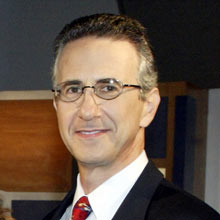REDMOND, Wash., March 13, 2006 – Knowing that today’s teenagers would rather punt their TV than part with their computer, Microsoft, working with expert child organizations around the world, such as the American Academy of Pediatrics (AAP) in the U.S., is creating a no-cost, Web-based safety service called Windows Live Family Safety Settings.
As part of the company’s Windows Live platform and safety offerings, Family Safety Settings aims to help parents safeguard their children online, much like they would when their young ones are riding in a car or biking down the street. Family Safety Settings, a tool that allows families to create customized settings that are appropriate for each family member, is rolling out in phases beginning in early summer.
Experts at the AAP say the Internet can be a valuable resource for parents and children to access information, learn new things and communicate with friends and family. However, they maintain it is important for families to understand that online threats exist and know how they can help ensure a safer experience.
The AAP has been the voice of children for over 75 years and has approximately 60,000 pediatric professionals as members in the United States, Canada and Latin America. These members dedicate their efforts and resources to the physical, mental and social health and well being for all infants, children, adolescents and young adults
To find out more about Windows Live Family Safety Settings, its genesis and how families might use it to help promote safe, secure and age-appropriate Web surfing, PressPass spoke with Ryan Hamlin, general manager of Microsoft’s Technology Care and Safety group, and Dr. Donald Shifrin, M.D., chair of the AAP Committee on Communications.
PressPass: Please tell us about Family Safety Settings.
Hamlin: Windows Live Family Safety Settings is a new, Web-based safety service, which will improve on current parental control technologies, empowering families with more complete safety functionality that’s less about “control,” and more about helping encourage open dialogues with parents and children about online safety, and helping enable anyone to protect their family and themselves from online content or communications they might find inappropriate. It will be a no-charge, global service available from Windows Live that anyone can use; we expect to begin rolling the service out to customers worldwide in phases later this year.

Ryan Hamlin, General Manager, Microsoft Technology Care and Safety Group
This customizable, dynamic safety service will help consumers better protect themselves and their families through content filtering for the Web, contact list management tools for communication services such as e-mail and instant messenger, and online/usage activity reports. It also will expand upon current parental control technologies by providing more options for families. For instance, one feature will warn users before they enter a site that has been deemed inappropriate and then logs the activity if the user chooses to proceed to the site – a tool to help parents understand how their children may be using the Internet.
I should also mention that Windows Live Family Safety Settings will also work in concert with the family safety offerings built into the upcoming Windows Vista, which, when used together, will help provide families with valuable layers of protection through both Web- and PC-based safety settings.
PressPass: What prompted this service and this work with organizations like the American Academy of Pediatrics?
Hamlin: Our business is technology, and we would never claim to be authorities on child development, so working with organizations like the AAP will enable our customers to gain solid guidance from experts they know and trust. In a recent study, customers told us overwhelmingly and consistently that protecting the family ranks as their No. 1 personal value, and this was true across the world, in nearly every country surveyed. Our goal is to help parents protect their children online, just as they would make their kids wear a helmet when biking or look both ways before crossing the street. We hope that by making Windows Live Family Safety Settings broadly available we can help accomplish this goal, and we’re excited to be working with child development experts around the world like the AAP to get their insights into the hands of parents to help them make more informed decisions.
PressPass: Dr. Shifrin, why did the American Academy of Pediatrics decide to work with Microsoft on this service?
Shifrin: The market is revealing a different “Digital Divide,” which is less between rural and urban access, and more between children and their parents. Teenagers would rather give up their TV than their computer, and research shows they use it in different ways from their parents, who primarily get on the computer to work or to do research. Kids also are getting on the computer at younger ages. Kids often are more savvy than their folks, and their parents might have no idea how their children are using the Internet. We, too, felt the market needed a tool like this. Microsoft approached us about this product, and we were excited about the opportunity to provide more parents with guidance surrounding online child safety.
PressPass: Why, exactly, do you feel that way?
Shifrin: As an organization, the AAP is committed to the attainment of optimal physical, mental and social health and well-being for all infants, children, adolescents and young adults. We believe this project lives up to that commitment. The AAP age-based guidelines, which will be directly integrated into the Windows Live Family Service Settings service, will help give parents valuable suggestions on appropriate settings as well as best practices for online activities. For instance, in addition to guarding their children from threats, guidance on what to do when a “teachable moment” occurs – such as when a youngster wants to date online – can help children experience new areas of the Internet in a safer way.
I like to use the car analogy: Surfing the Web should be like driving a car. We don’t just wait until our children turn 16 (in the U.S.), give them a driver’s license, put them in a car and send them off. We educate them. Similarly, with the Internet, we encourage parents to get involved because sooner or later kids are going to be on the Internet, and we want them to surf safely.
PressPass: Talk to us about potential online threats. What’s out there that parents should be worried about?
Shifrin: The No. 1 threat for children of course is predators. Beyond that, we also know they can become immersed in online gaming, gambling and cyberbullying on blog sites. You hear about these examples on an almost daily basis. There also are sites on obesity, alcohol, tobacco and body image that can pose potential problems.

Donald Shifrin, M.D., Chair, American Academy of Pediatrics, Committee on Communications
Hamlin: In 2005, there were 2,669 reports of online enticement of children for sexual acts to the National Center for Missing and Exploited Children’s CyberTipline. And, according to a U.S. Department of Justice study, one in five children age 10 to 17 has received unwanted sexual solicitations online. While no measure could guarantee 100-percent safety against these or any other threats, we’ve designed Family Safety Settings to provide a lot of options for parents, allowing them to set guidelines based on age, family values, etc.
Parents have options to set up a warning system with older children and with younger children, they might opt to block out certain Web categories altogether. And being able to include expertise from organizations like the AAP in this has been valuable and truly gives parents practical and useful guidance to help them determine what is best for their families.
Shifrin: Family Safety Settings seems to give parents a good level of flexibility to help create an environment of trust between parents and children. Family Safety Settings is designed to promote this kind of trust, giving parents more comfort in knowing what their children are doing while allowing kids to explore and enjoy the Internet. It also is designed to engage parents and kids in conversations about the Internet. For example, if the report shows that a 16-year-old is spending a lot of time on a certain commercial site, the parent can discuss with the child why that is and determine how to proceed from there.
PressPass: How can Family Safety Setting help protect families from these threats?
Hamlin: In addition to expert guidance from the AAP, Family Safety Settings provides Web filtering that will allow customers to choose allow, block or warn settings for a range of content categories, and individualized settings that can be applied for each member of the household. Parents will be able to access activity reports for each user in the family, any time from any PC, to help them stay informed about how their children are browsing the Web or communicating online. Parents also will be able to create “allow” lists for communication services, including Windows Live Mail, Messenger and Spaces, to help prevent their children from crossing paths with unknown contacts.
PressPass: How does this service fit in with what Microsoft already offers to improve online safety?
Hamlin: Windows Live Family Safety Settings is complementary to parental control and safety technologies we currently offer through a number of products and services, as well as other family safety functionality coming with Windows Vista. Microsoft will make Windows Live Family Safety Settings available at no charge, and, because it is part of the Windows Live Web-based services, users can access settings and reporting functionality from any PC, providing parents with great flexibility around how they monitor and manage their child’s online activity. In addition, our goal is to provide valuable family safety protections across our products and services to help ensure we reach as many people as possible.
PressPass: What’s next for Microsoft, and the AAP as well, when it comes to helping safeguard Internet experiences?
Hamlin: Again, protecting our customers online is of paramount importance for Microsoft and has become part of the brainstorming process of all that we do. As for FSS, we are currently testing certain functionality through a very limited, private beta. Early this summer, we expect to begin making the service available to Windows Live customers in dozens of countries worldwide. Initially, the service will provide protections like Web-content filtering to help manage what information families decide to access. Later in the year, we will expand the service with additional functionality such as helping provide contact list management capabilities so users can have a say in who they interact with online. If interested, people can sign up for the Windows Live Family Safety Settings waiting list by e-mailing: [email protected].
Shifrin: As for the AAP, we continually look for ways to nurture and improve the lives of children and obviously must address their greatest influences. A recent study showed that on average, the amount of time they spent with the media, including music, TV, computers, radio, was six hours and 41 minutes a day. There is no question the media is the overriding influence in their lives. We welcome the opportunity to work with Microsoft and others to help ensure that interfacing with this material is a positive experience.




